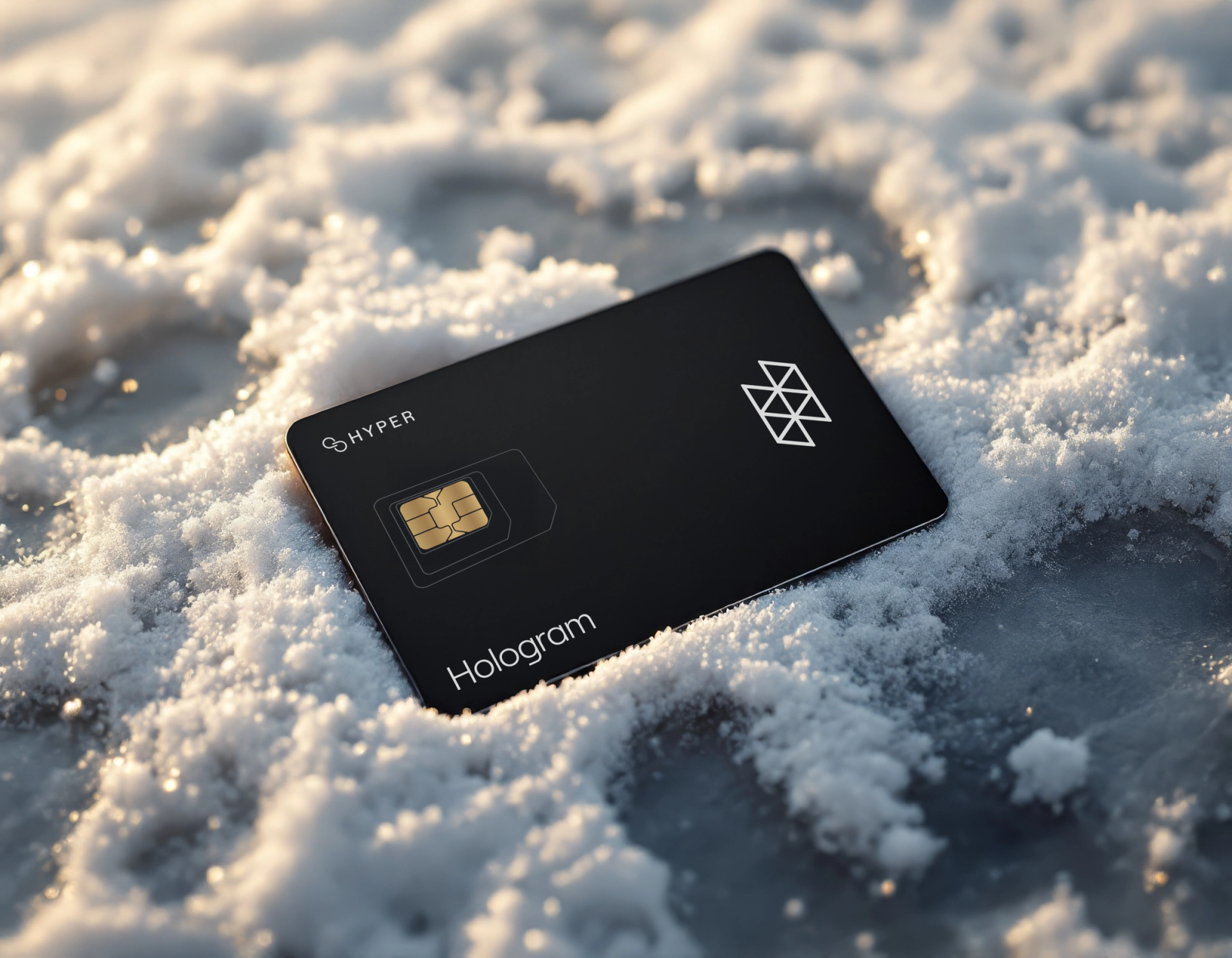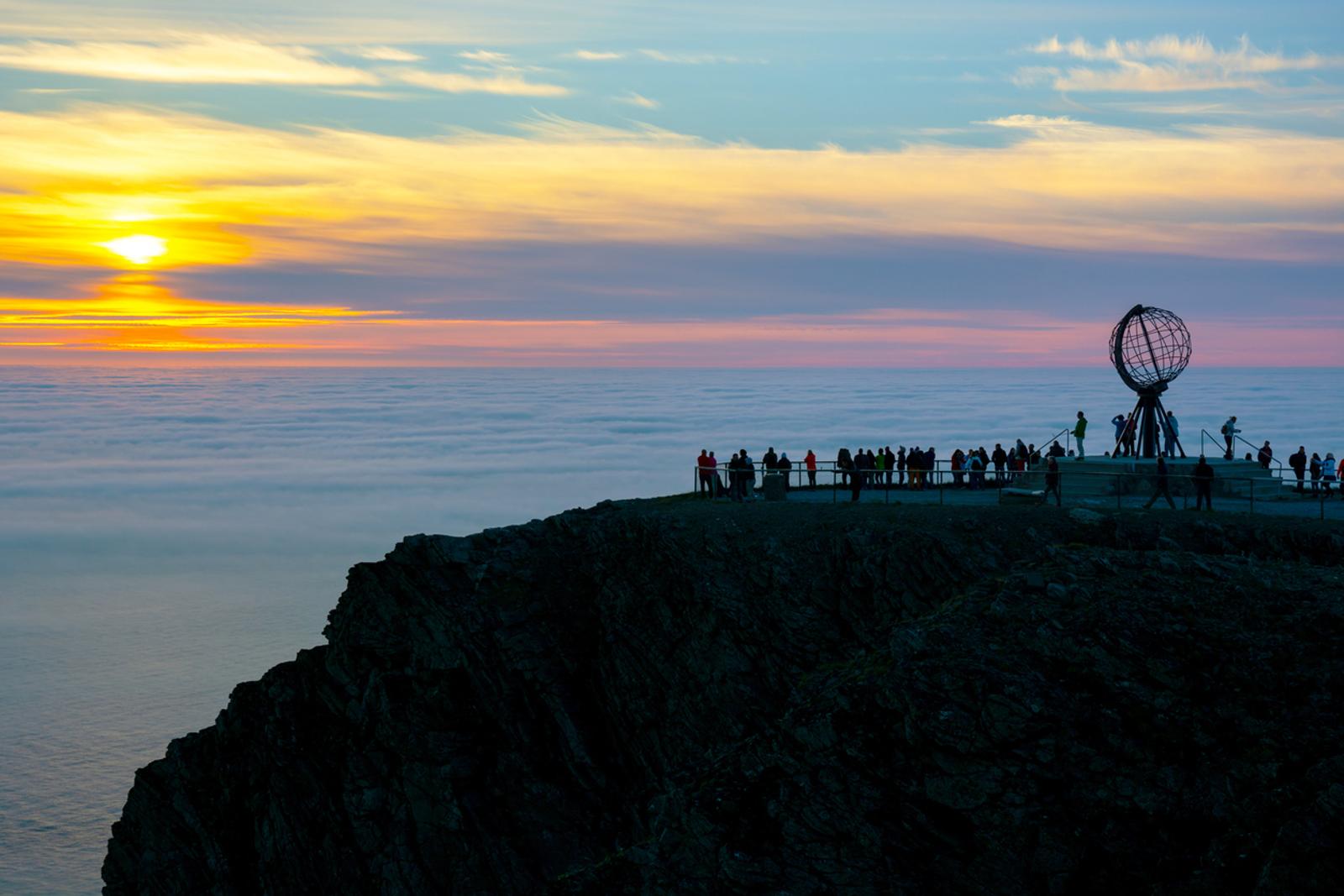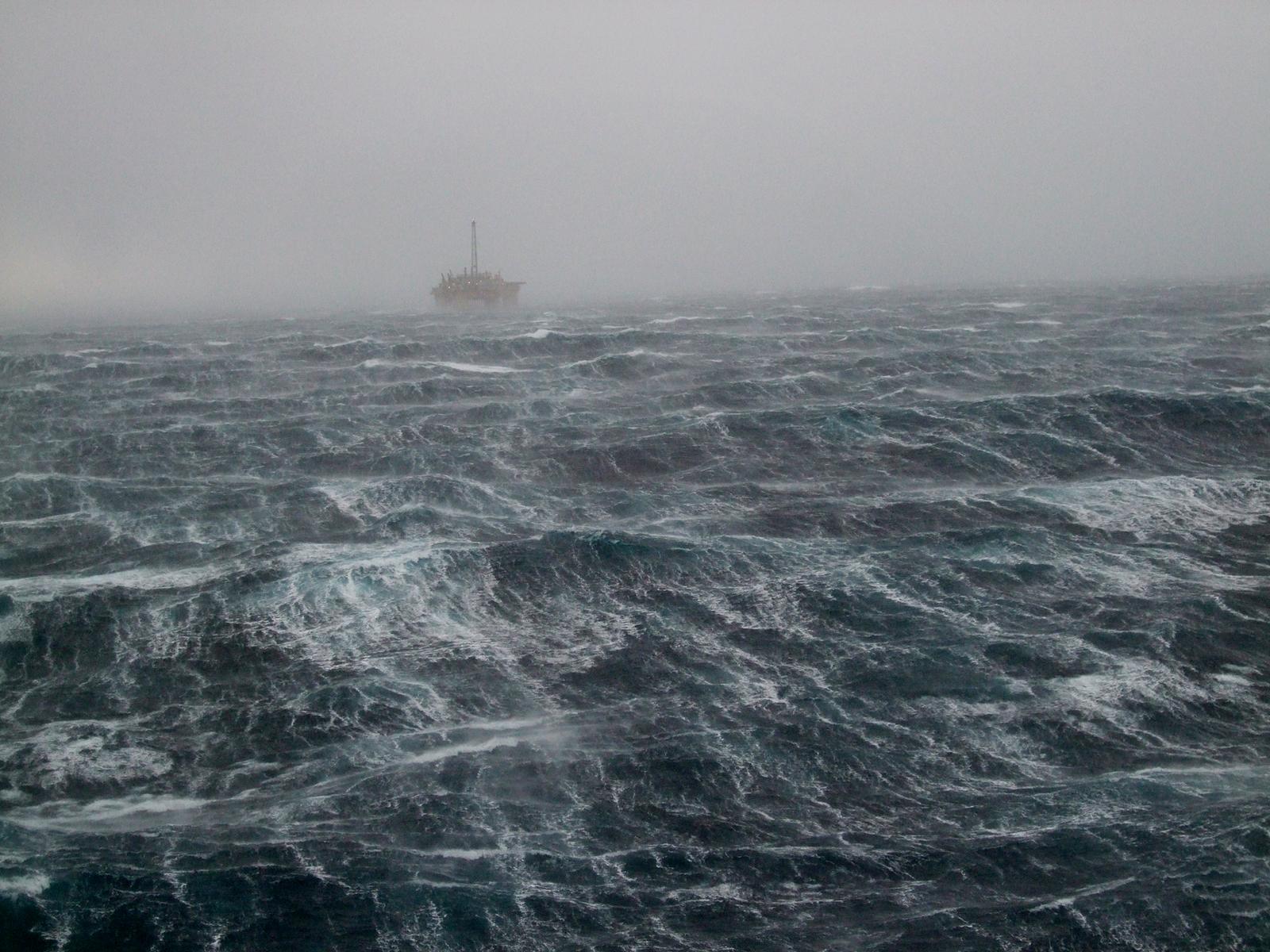Cold weather IoT deployment guide: Engineering resilient solutions for Nordic environments

Learn the details of design, deployment, and maintenance of IoT systems in Nordic countries for unique environmental and technical challenges.
The Nordic region leads global IoT adoption with 4 connected devices per person—4 times the global average—driving a projected €9.1 billion market by 2025. However, successful deployments require understanding the complex interplay between extreme cold, freeze-thaw cycles, and connectivity challenges that define these environments. This guide provides actionable engineering solutions, proven case studies, and technical specifications that enable reliable operation in conditions where standard IoT devices fail.
Overview
Technical considerations
- Battery chemistry and thermal management systems
- Antenna performance and communication systems
- Enclosure design and component selection
Deployment and best practices
- Proven Nordic deployment case studies
- Hologram's technical advantages for Nordic deployments
- Implementation methodology and best practices
Recommendations for the Nordic region
- Don’t forget these advanced engineering principles
- Nordic-specific recommendations
- Future-proofing Nordic IoT deployments
- Key points to remember
Understanding Nordic environmental demands
Nordic countries present a spectrum of challenging conditions that IoT engineers must address through systematic design approaches. Temperature extremes range from -40°C in Arctic regions to +40°C in summer, with rapid freeze-thaw cycles creating mechanical stress on components and seals. The region's unique high-latitude phenomena, including polar night and midnight sun, create additional UV exposure and thermal cycling challenges. Let’s take a deeper dive into the challenges.
Temperature profiles vary significantly across the region
Norway's coastal areas experience milder winters (-6°C to 3°C) while inland regions face much colder conditions. Sweden's northern regions endure polar phenomena with temperatures similar to Norway's inland areas. Finland's Arctic regions can reach -15°C regularly, while Denmark offers the mildest climate with January temperatures from -2°C to 4°C. Iceland presents unique challenges with highland temperatures below -10°C and recorded extremes of -39.7°C, combined with geothermal activity and volcanic environments.
Freeze-thaw cycles create the most destructive environmental stress
These cycles cause expansion and contraction of materials that can be damaging. These cycles cause binding of dissimilar materials, seal degradation, and electronic component drift. MIL-STD-810 Method 512.7 specifies minimum 20 cycles for diurnal effects testing, but Nordic deployments may experience hundreds of cycles annually. Standard testing protocols may not adequately address the impact of these freeze-thaw cycles.
Wind, snow, and sun conditions create load and design issues
Snow loads follow Eurocode 1 (EN 1991-1-3) standards with Nordic-specific modifications requiring robust structural designs. Wind conditions vary by national standards under Eurocode 1 part 1-4, with exposure categories creating up to 20% difference in structural loads. UV exposure at high latitudes presents unique challenges with midnight sun phenomena above 65°44' latitude creating intense summer exposure followed by polar night conditions.

Battery chemistry and thermal management systems
The implementation of thermal management systems, including heating elements and advanced insulation materials is essential to maintain optimal battery performance and protect sensitive electronics in harsh Nordic environments. Proper thermal design and power budgeting are also critical for ensuring longevity and reliability of cellular IoT devices deployed in remote Nordic locations where maintenance access can be limited.
Lithium Thionyl Chloride batteries
Lithium Thionyl Chloride (LiSOCl2) provides optimal performance for extreme cold applications with an operating range of -55°C to +125°C. At -40°C, these batteries maintain approximately 60% capacity retention compared to 25°C operation, significantly outperforming other chemistries. The voltage output follows the relationship: V = 3.6381 - 0.0762T + 0.0019I - 0.000008395t, where T is temperature, I is current, and t is time.
- Engineering recommendations for LiSOCl2 implementation include current limiting to 2.5mA for maximum capacity utilization, with energy storage elements (supercapacitors) handling high-current transmission pulses.
- The self-discharge rate of <1% per year makes these batteries ideal for long-term Nordic deployments where maintenance access is limited.
Lithium Iron Phosphate batteries
Lithium Iron Phosphate (LiFePO4) batteries require thermal management for sub-zero operation, as they cannot charge below 0°C due to lithium plating risks. At -20°C, capacity drops to 60% of rated performance, but recovery characteristics are superior to lead-acid alternatives. These batteries work best in applications where heating elements can maintain above-freezing temperatures during charging cycles.
Thermoelectric generators
Thermal management systems must address both heating and insulation requirements. Thermoelectric generators (TEGs) with phase change materials (PCMs) can provide 407.3mW output power with 26.43% conversion efficiency when maintaining a minimum 26.31K temperature gradient. Polyimide film substrates with silica-AlN composite layers enhance thermal dissipation while silica aerogel provides ultra-low thermal conductivity insulation.
- Heating element design requires careful power budgeting using the thermal resistance calculation: TJ = TA + (PD × θJA), where TJ is junction temperature, TA is ambient temperature, PD is power dissipation, and θJA is thermal resistance.
- Heat transfer calculations must account for surface area using Heat transfer = (Area × Temperature differential × Btu/hr./ft.²).
Antenna performance and communication systems
The harsh Nordic climate, characterized by extreme cold and ice formation, significantly impacts the electrical properties of materials and poses substantial risks to the reliability of deployed devices. To ensure consistent connectivity and operation in such demanding settings, engineers must carefully consider a range of factors, from antenna design and material selection to thermal management and power efficiency.
Ice impacts performance
Ice formation creates the most significant challenge to antenna performance by shifting resonant frequencies and increasing VSWR through impedance mismatches. Ice has a dielectric constant of approximately 3.2 compared to air's 1.0, causing resonant frequency shifts of 32MHz for frost and 36MHz for ice accumulation at 2.378GHz. Each 80μL of ice accumulation creates roughly 2MHz of frequency shift.
Environmental resistance is critical for antenna
Antenna material selection must prioritize environmental resistance over electrical performance. Galvanized steel wire provides superior durability compared to copper in harsh environments, with electric fence wire (#18-19 gauge) offering cost-effective, high-durability solutions. Ground plane effects become critical in snow-covered environments, where quarter-wave ground plane antennas present 37Ω impedance with ideal ground conditions.
Cellular modems perform at low temperatures
Communication module temperature specifications require industrial-grade components rated for -40°C operation. Teltonika RUTX11 LTE Cat 6 devices operate reliably at -40°C, while ADC12 aluminum enclosures provide -40°C to +80°C operation ranges. Cellular modems generally improve efficiency at lower temperatures due to reduced thermal losses in power amplifiers.
Enclosure design and component selection
Environmental protection and component selection are critical to ensure reliable operation in extreme conditions. IP ratings, gasket materials, enclosure designs, and components must be carefully chosen to withstand harsh weather, temperature fluctuations, and potential submersion.
IP ratings must exceed standard commercial requirements
IP65 provides dust-tight protection with water jet resistance, while IP67 offers temporary submersion protection to 1 meter. IP68 ratings handle continuous submersion but may be necessary for applications experiencing heavy snow loading or flooding conditions.
Gasket material selection determines seal longevity
Silicone gaskets operate from -55°C to +200°C with 35+ year service life, UV resistance, and low compression set characteristics. Fluorosilicone offers enhanced chemical resistance, while EPDM provides cost-effective solutions for moderate temperature ranges.
Thermal expansion is a top consideration
Thermal expansion coefficients must be matched between enclosure materials and internal components. Polycarbonate provides low thermal expansion coefficients with high heat deflection temperatures, while aluminum offers natural EMI/RFI shielding but blocks internal antennas. Stainless steel provides excellent durability with moderate expansion characteristics.
Component selection requires industrial-grade temperature ratings
Industrial-grade components operate from -40°C to +85°C, while automotive-grade components extend to +125°C. Military-grade components provide -55°C to +125°C operation but at significantly higher costs.
Semiconductor junction temperature
These calculations become critical for reliability: TJ = Ta + (PD × Rja), where junction temperature may differ significantly from ambient due to self-heating effects. Power dissipation effects and thermal resistance (θJA) must be calculated for each component to ensure operation within safe limits.
Proven Nordic deployment case studies
Cellular IoT technologies are transforming industries in the Nordic regions, ensuring critical operations run smoothly even in the face of harsh environmental conditions.
Smart farming and livestock management
Nordic livestock operations are primarily concentrated in rural and agricultural regions of the Nordic countries. These areas leverage cellular IoT, to efficiently manage livestock despite the challenging climates and geographical features. Many Norwegian livestock monitoring systems use Nordic Semiconductor's nRF9160 cellular IoT SiP with LTE-M, NB-IoT, and Bluetooth LE protocols. These systems achieve 99.6% working time prediction accuracy while reducing manual monitoring labor costs by 50% and resource usage by 30% through precision farming techniques.
Smart foresting
Forest monitoring networks across Nordic forests utilize AI-powered sensor networks with distributed IoT devices featuring acoustic and environmental sensors. LoRa technology provides 10km+ range communications with solar-powered nodes achieving 95% uptime in harsh forest conditions. These systems successfully detect illegal logging, prevent fires, and monitor biodiversity through real-time sound pattern recognition.
Energy
Oil and gas operations in the North Sea and Arctic regions represent the most demanding IoT deployments. Equinor's Arctic operations in the Barents Sea utilize integrated IoT sensor networks operating in ice-free conditions at extreme temperatures. These systems achieve 40% maintenance cost reduction through predictive maintenance, 60% reduction in on-site personnel requirements, and 15% increase in operational uptime.

Smart cities
Stockholm has achieved smart city success by its large-scale IoT integration through Sensative's Yggio platform. The city-wide deployment uses nRF52840 SoC for mesh networking combined with cellular IoT, achieving 50-70% reduction in management costs while providing real-time environmental monitoring and adaptive lighting systems.
Maritime applications
Telenor's Maritime Solutions with Global Data SIM technology provides coverage across 140+ countries and 6 maritime zones. The LT-4100 satellite communication system operates from -40°C to +85°C with heating elements, enabling vessel tracking, environmental monitoring, and predictive maintenance across Nordic waters.
Hologram's technical advantages for Nordic deployments
99.5% uptime guarantee
Hologram's Outage Protection SIM technology provides industry-leading reliability with dual-core architecture delivering 99.95% uptime guarantee through automatic failover within minutes of network outages. This redundancy becomes critical in Nordic environments where weather conditions can disrupt individual carrier networks.
Easy SIM management
Hologram’s eUICC-enabled features future-proof deployments through over-the-air updates and dynamic network switching. The digital wallet approach allows multiple carrier profiles on a single SIM, enabling seamless transitions between networks and countries without physical hardware changes. This capability is particularly valuable for Nordic deployments spanning multiple countries with different primary carriers.
Built to perform in harsh conditions
Industrial-grade hardware specifications ensure reliable operation in extreme conditions. Hologram's SIM cards operate from -40°C to +105°C with 800KB NVM memory and 25+ year data retention. The 500,000+ read/write cycles and vacuum sealing capabilities provide the durability required for harsh Nordic environments.
550+ global carrier partnerships
Hologram’s comprehensive Nordic carrier partnerships include access to all major operators across Denmark, Finland, Iceland, Norway, and Sweden. The 550+ global carrier partnerships ensure automatic network selection based on signal strength and reliability, with no 90-day roaming limitations typically imposed by carriers.
Cold weather implementations
Frost Control Systems demonstrates real-world success in cold weather road monitoring across Michigan, Indiana, and Nebraska. The implementation eliminated cellular dead zones, reduced costs by 90% compared to traditional equipment, and enabled geographic expansion through Cat-M1 LTE-M technology for low-power operation.
Implementation methodology and best practices
We’ve outlined important technical factors and provided an overview of cold weather implementations. Here are five key steps if you’re ready to start building for harsher environments?
- Design methodology must begin with thermal budget analysis calculating thermal loads and cooling requirements for each component.
- The thermal resistance equation θJA = (TJ - TA)/PD determines heat dissipation requirements.
- Power calculations must account for cold weather battery performance degradation.
- Component selection priorities should emphasize industrial-grade ratings (-40°C to +85°C minimum) with automotive-grade components (+125°C) for critical applications.
- Resistor temperature coefficients should remain below 10 ppm/°C using metal film types.
- Capacitors should utilize C0G/NP0 ceramic types for temperature stability.
- Power management strategies must optimize for cold weather consumption patterns.
- Current limiting to 2.5mA maximizes LiSOCl2 battery utilization, while energy storage elements handle transmission pulses.
- Dynamic voltage scaling and temperature-aware power management algorithms extend operational life in extreme conditions.
- Testing and validation protocols must exceed standard commercial requirements.
- MIL-STD-810H Method 502.7 specifies severe cold testing to -51°C, while temperature cycling tests require minimum 20 cycles for diurnal effects.
- Individual component qualification, system integration testing, and accelerated aging tests ensure reliability in Nordic conditions.
- Environmental testing compliance requires adherence to IP67 minimum ratings with IP68 preferred for harsh conditions.
- Gasket integrity testing through freeze-thaw cycles validates seal performance.
- Thermal expansion testing ensures enclosure durability across temperature extremes.
Don’t forget these advanced engineering principles
Build uptime in from the start
Connectivity redundancy becomes critical in Nordic deployments where single-point failures can isolate devices for months. Hologram's Multi-Core SIM technology provides automatic network switching, while hybrid connectivity approaches combine cellular, LoRaWAN, and satellite communications for maximum reliability.
Battery systems have unique requirements
Battery management systems must address cold weather charging limitations through temperature monitoring and thermal management. LiFePO4 batteries require heating elements to enable charging above 0°C, while power budgeting calculations must account for heating power consumption in total system design.
Choose your sensors wisely
Sensor calibration strategies must compensate for temperature-induced drift through multi-point calibration across operating ranges. RTD sensors provide superior accuracy and stability compared to thermistors, while sensor fusion techniques combine multiple sensor types for enhanced reliability and accuracy.
Plan for easy access
Maintenance accessibility planning must account for Nordic weather limitations restricting site access for months. Design for extended autonomous operation, remote diagnostics capabilities, and minimal maintenance requirements ensure reliable operation during inaccessible periods.
Nordic-specific recommendations
Beyond the implementation best practices and engineering considerations, the Nordic region has additional requirements and recommendations for successful cellular IoT solutions.
Regulatory compliance
Products must adhere to Eurocode 1 structural standards with national modifications for snow loads and wind conditions. Each Nordic country adapts these standards for local conditions, requiring consultation with national meteorological services for accurate environmental data.
Supply chain
Be sure to consider component availability and shipping delays during winter months. Hologram's global single SKU approach simplifies supply chain management by using identical hardware across all Nordic countries, reducing inventory complexity and shipping coordination.
Technical assistance
Support infrastructure benefits from Hologram's 24/7/365 technical support with 90% customer satisfaction ratings. Their Solutions Engineering team provides deep cellular and IoT expertise specifically relevant to harsh environment deployments, while local European points of presence ensure low-latency support.
Optimized pricing
Cost optimization strategies include Hologram's transparent per-MB pricing model ($0.03 per MB) with volume discounts for enterprise deployments. Zero inactive fees for hibernated SIMs and data pooling across device fleets optimize costs for seasonal Nordic applications.
Future-proofing Nordic IoT deployments
As the Nordic region embraces cutting-edge technologies to address its unique challenges, cellular IoT advancements are unlocking new possibilities across industries. From enabling ultra-low latency through 5G integration to driving sustainability with energy-efficient designs, Hologram's innovative solutions are poised to power transformative applications in harsh, remote environments while aligning with Nordic environmental and operational goals.
5G delivers performance and low latency
5G network integration will enable ultra-low latency applications requiring real-time response in harsh conditions. Hologram's eUICC technology ensures devices can be updated to support new network technologies without hardware replacement, extending device lifecycles and reducing long-term costs.
Local processing at the edge
Edge computing integration will enable real-time processing capabilities for applications requiring immediate response to environmental changes. Local processing reduces bandwidth requirements and improves response times for critical safety systems in Nordic industrial applications.
AI improves efficiency
Artificial intelligence integration will enhance predictive maintenance capabilities, extending equipment life and reducing maintenance costs in remote Nordic locations. Machine learning algorithms can optimize power consumption, predict component failures, and adapt to local environmental conditions.
IoT helps accelerate environmental goals
Sustainability solutions powered with cellular IoT align with Nordic environmental goals through energy-efficient designs, renewable energy integration, and lifecycle optimization. Hologram's commitment to sustainable operations and renewable energy usage supports Nordic environmental goals while reducing operational costs.
Key points to remember
Engineering resilient IoT solutions for Nordic environments requires systematic attention to component selection, thermal management, connectivity redundancy, and environmental protection. The region's unique combination of extreme cold, freeze-thaw cycles, and remote geography creates technical challenges that standard commercial solutions cannot address. Here are the key takeaways from this deployment guide.
Hologram's cellular IoT platform
- Proven solutions specifically designed for harsh environment deployments:
- Our outage protection multi-core SIM technology with 99.95% uptime guarantee, industrial-grade hardware rated for -40°C to +105°C operation.
- Plus, comprehensive Nordic carrier partnerships address the fundamental connectivity challenges of Nordic deployments.
Technical success factors
- Proper battery chemistry selection (LiSOCl2 for extreme cold, LiFePO4 with thermal management)
- Robust thermal management systems, antenna designs accounting for ice formation
- Appropriate enclosure specifications with IP67+ ratings
- Industrial-grade component selection throughout the design
IoT value across industries
- Case studies demonstrate substantial ROI with 15-60% improvements in operational efficiency, 40-60% reductions in maintenance costs, and 50-70% reductions in safety incidents.
- These results validate the investment in robust cold weather IoT solutions and provide clear pathways for implementation across Nordic industries.
Nordic IoT deployments represent both the greatest technical challenges and the highest potential returns in the global IoT market. By following these engineering guidelines and leveraging Hologram's specialized cold weather capabilities, organizations can achieve reliable, cost-effective IoT implementations that perform consistently in the world's most demanding environmental conditions.